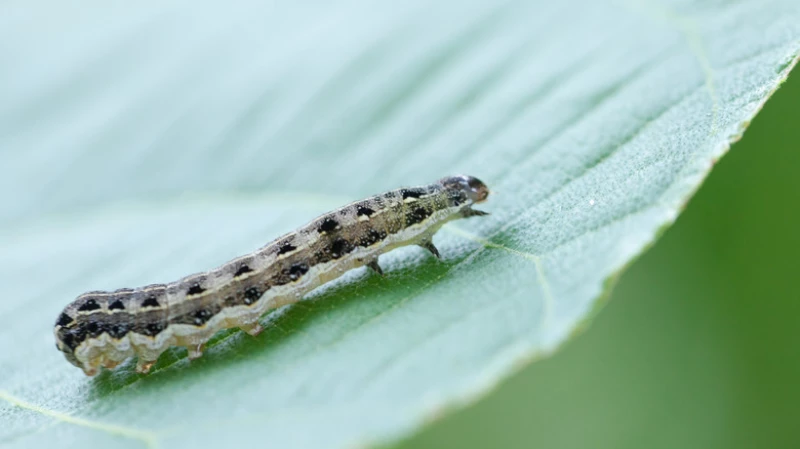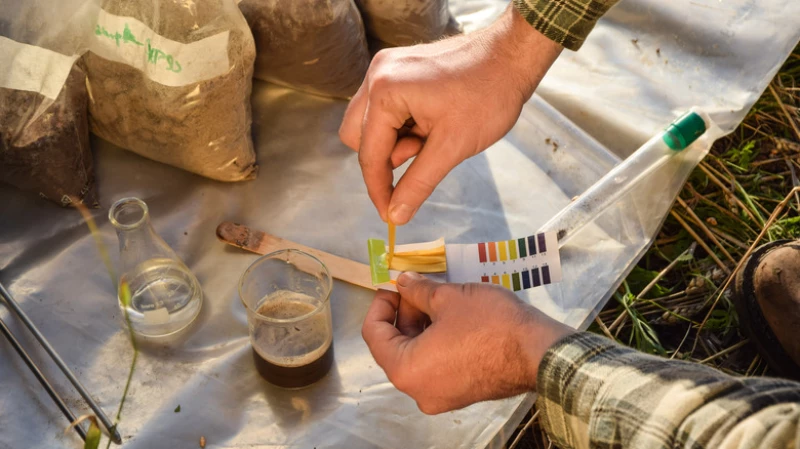Asparagus, a perennial vegetable, is a valuable addition to any garden. With a lifespan of over 15 years under the right conditions, this plant not only provides a bountiful harvest but also adds ornamental value with its ferny and colorful shoots. However, unlike other vegetables, growing asparagus can be quite challenging. It is considered one of the most difficult vegetables to cultivate in a garden. To ensure successful growth, asparagus requires specific planting and care conditions both before and after planting, as well as ongoing maintenance throughout its long lifespan. Additionally, gardeners must remain vigilant against pests that are attracted to the delicious spears of this resilient plant.
The Importance of Soil Quality for Growing Asparagus

Growing asparagus requires proper soil testing and preparation to ensure a successful harvest. The quality of the soil, pH levels, and nutritional values play a significant role in the growth of this vegetable. Without the right conditions, your asparagus plants may struggle to thrive or even fail to establish altogether.
One key factor to consider is the drainage of the soil. Asparagus plants do not tolerate water-logged conditions, which can lead to diseases like root and crown rot. It is essential to have well-draining soil, regardless of whether you have loamy or sandy soil in your garden.
Maintaining the pH levels of the soil is also crucial for the health of asparagus plants. A slightly acidic soil with a pH of 6.5 to 7.0 is ideal for growing asparagus. This range supports the plant's growth and development throughout its life cycle.
Nutritional deficiencies can also impact the growth of asparagus. Before planting, ensure that the soil is rich in necessary nutrients to prevent issues like stunted growth and tough spears. By addressing these soil quality factors, you can create an optimal environment for your asparagus plants to thrive and produce bountiful harvests.
Harvesting asparagus: Timing and Quantity are Key
Harvesting asparagus is crucial, but it must be done at the right time and in the right amounts to avoid problems. Asparagus spears are essentially young stalks that grow into ferns and support the crown. Overharvesting can hinder the plant's growth and reduce the yield in the following season. Similarly, harvesting too early can deplete the plant's sugar reserves, affecting its quality and making it more susceptible to pests and diseases.
If you want to ensure a bountiful asparagus harvest, it's essential to understand the dynamics between male and female plants. Asparagus is a dioecious vegetable, meaning individual plants are either male or female. This classification impacts not only the pollination process but also the size and yield of the asparagus spears.

Female asparagus plants, after pollination, divert energy into producing berries that are not only inedible but also drain resources from the plant. Consequently, female plants typically have a lower yield compared to male plants. On the other hand, male asparagus plants yield smaller but more uniform spears. Opting for all-female varieties may result in larger spears but a reduced overall yield, along with the hassle of managing proliferating asparagus seedlings.
To circumvent this issue, consider planting all-male asparagus varieties and hybrids. The Jersey series, including Jersey Giant, Jersey Supreme, and Jersey Knight, developed by Rutgers University, are popular choices known for their high yield. Additionally, Millennium is a new cold-hardy hybrid worth exploring for your asparagus garden.
Protecting Your Asparagus During the Winter Months

Asparagus, like many perennials, requires special care during the winter to ensure its survival and productivity. Cold weather can be harsh on this vegetable, potentially damaging the roots and causing the stalks to become soft and brown. If you live in a region where temperatures regularly drop below 20 degrees Fahrenheit, it's essential to prepare your asparagus bed for the winter months.
One way to protect your asparagus is to start winterizing the plant when the leaves turn yellow and fall off in autumn. Trim back the fronds to about 2 or 3 inches from the ground. Next, cover the bed with a thick layer of organic mulch, such as sawdust, wood chips, or straw. This layer, typically 4 to 6 inches thick, helps insulate the plant from freezing soil, which can cause cracking.
It's important to note that while mulching is beneficial for winter protection, it can also slow down the growth of the asparagus in the spring. If your asparagus bed receives a significant snow cover during the winter, you may not need to mulch it. Once the last frost has passed, inspect the plant and remove any stalks that have been damaged by the cold.
Weeds Pose a Significant Threat to Asparagus Growth

Asparagus, being a perennial plant with a long lifespan, is often at risk from weed infestation if the soil is left untilled. Weeds like quackgrass, Canada thistle, ragweed, wild radish, and nutsedge can take root and compete with the asparagus for nutrients and moisture. This competition can significantly impact the growth and productivity of the vegetable crop. Additionally, tall weeds have the potential to cast shadows over the asparagus plants, reducing their access to sunlight.
How to Combat Weeds in Your Small Asparagus Bed
Dealing with weeds in a small asparagus bed can be a challenge, but there are effective methods to keep them at bay. One of the best ways is to pull them out by hand. After watering when the soil is soft, grasp the base of the weed and pull it out, making sure to remove the roots as well. Another method is shallow tilling of the soil, turning the top 3 inches of the rows to prevent weeds from establishing. It is recommended to till the soil in early spring before the first spears grow and again in the fall after the harvest. Additionally, using mulch and herbicides can also help in the fight against weeds.
Watch out for these three beetles
Beetles have a particular affinity for asparagus, with three species posing a threat to its growth. Two of these beetles are named after the vegetable they target: the common asparagus beetle and the spotted asparagus beetle. The common beetle has a dark blue body with cream blotches, while the spotted beetle sports a reddish-orange body with 12 black spots. Both beetles, in their larval and adult stages, feed on different parts of the asparagus plant. The third beetle to watch out for is the Japanese beetle, known for its flamboyant appearance and tendency to feed on the stem's leaf-like parts.
Beware of asparagus miners and aphids
Both asparagus miners and aphids cause damage to the plant in a specific way. Asparagus is the only food source for the asparagus miner. The fly is about 4 mm long with a black body and transparent wings. The asparagus miner overwinters in burrows in the soil and emerges in May. It feeds on the old stalks and lays eggs under the stem of the plant. When the eggs hatch, the larvae will feed on the stem and create mines that could girdle the vegetable. Asparagus miners also carry the pathogen that causes Fusarium disease. As for aphids, a heavy infestation can lead to distorted growth, branching of the shoots, and stunted root development.
Managing Asparagus Beetles
One way to manage the two asparagus beetles is to pick them up by hand and drown them in a bucket full of soapy water. They're most active in the afternoons, so that's the best time to look for them. Keep an eye out for the piles of brown eggs on the stems and dispose of them in the same way. Another option is to invite ladybugs to your garden — their larvae feed on the eggs and larvae of the asparagus beetles. You can keep Japanese beetles out of your garden by planting geraniums or use pheromone traps to control their infestation.
Dealing with Pesky Asparagus Pests
Unfortunately, asparagus miners are hard to kill because pesticides only work on the adults, but have no effect on the immature bugs. Preventing an infestation is more effective than trying to control the insects. In the spring, remove overwintering old asparagus stalks and get rid of any wild asparagus plants growing in the area. To get rid of aphids, till the soil in the spring and remove dead ferns in the fall. Natural aphid predators — such as ladybugs, predatory midges, and lacewings — help control the pests.
Ward off Cutworms and Armyworms
Yellow-striped armyworms are about 1.5 inches long with yellow, black, and red stripes along their backs. They only feed on the ferns of the asparagus, so their damage is mostly limited. But the same can't be said about cutworms, which come in two flavors. White cutworms are translucent worms the same size as armyworms. They attack the asparagus from early spring to June, causing a lot of damage to the tips of the spears. Dark cutworms have brown stripes on their backs and feed on the base of the asparagus. Their damage ranges from distorted spears to slowed-down growth.
To get rid of cutworms, don't let weeds grow in or near the asparagus bed. Another effective method is to clear out debris where the grubs take shelter. Since the worms are active at night, pick them up and drown them in a bucket. If you have a large infestation, consider spraying them with a pesticide that contains permethrin. As for armyworms, letting nematodes in the soil is an effective natural remedy to control the pests. Bacillus thuringiensis pesticides can be used to eliminate small worms, although they don't work against large ones.
Protect Your Asparagus Plants from Fusarium Crown and Root Rot

Asparagus growers face a significant threat from Fusarium crown and root rot, a deadly disease caused by fungal spores in the soil. This disease can halt the growth and spear production of asparagus plants, leading to yellowing, wilting stems with reddish-brown lesions. The rot extends underground, affecting the main roots and ultimately causing plant death. Asparagus miners are carriers of this destructive disease.
Unfortunately, there is no cure for Fusarium crown and root rot once the soil is contaminated. Prevention is key to protecting your asparagus crop. Before planting seeds, it is essential to wash them in hot water or treat them with fungicides to eliminate any potential contamination. Managing asparagus miners and ensuring the overall health of the plants through proper care, fertilization, and avoiding overharvesting can also help prevent infections. Adjusting the soil pH to 7.0 can further aid in controlling the pathogen.
Effective Strategies to Prevent Asparagus Rust

Another common threat to asparagus plants is asparagus rust, a fungal disease that can weaken and damage the crop. To protect your asparagus from this disease, it is crucial to implement preventive measures. Asparagus rust appears as orange pustules on the stems and foliage, causing defoliation and reduced plant vigor.
Preventing asparagus rust involves maintaining good airflow around the plants by spacing them adequately and avoiding overhead irrigation. Removing infected plant debris and practicing crop rotation can also help reduce the risk of disease spread. Applying fungicides preventatively and ensuring proper plant nutrition can further fortify your asparagus plants against rust.
Asparagus rust is a fungal disease that affects the appearance, growth, and productivity of asparagus plants. The culprit behind this disease is the Puccinia asparagi fungus, primarily impacting the ferns of the vegetable. Infected ferns display small green lesions that eventually merge to form larger ones, with some appearing on the stems as well. As the lesions mature, they take on a rust-colored hue and release spores that perpetuate the infection cycle. Before winter sets in, these rust-like spores turn black in preparation for overwintering. Infections often result in a weakened crown and reduced spear production, with rust spreading more easily in humid conditions and dry soil.
To combat asparagus rust, one effective method is to consistently harvest spears in the spring. This practice helps eliminate spores from the plant, reducing infections and disrupting the cycle of reinfection and overwintering. It is also advisable to cut and dispose of infected ferns before the arrival of spring to prevent disease spread. For areas prone to asparagus rust, choosing rust-resistant varieties like the Millennium strain can be beneficial. Additionally, spacing rows in the asparagus bed at least 6 feet apart can enhance ventilation and minimize infections.
Purple spot is another fungal disease that infects the ferns of the asparagus and reduces the production of new spears. The fungus overwinters on asparagus debris left around the bed. During that time spores are produced and lie in wait for the spring. They enter the plant's tissue through wounds or breathing pores on the surface. They move to the ferns and cause them to go dormant prematurely. The first signs of the infection are purple lesions on the spears. Other tan spots will appear on the ferns. Those can merge and become a large patch causing the leaves to fall. The fungus favors wet conditions, sandy and untilled soil, and needs wind to spread. Purple spot infections could also be a gateway to other diseases, such as Fusarium.
Regular maintenance and clearing up debris from the asparagus bed is a crucial step in preventing the disease. In the fall, remove old ferns and till the soil to bury them. If you have sandy soil, consider planting cover crops that prevent sand from blowing and infecting the plants. Mulching is also another option if cover crops are not an option. To control infections, spray the plants with a fungicide as soon as you notice the first symptoms of the disease.
To keep your asparagus plant healthy and free from infections, it is important to ensure that the plant remains dry, especially the ferns. One recommended method is to water the plants in the early morning, allowing the sun to dry out any excess moisture throughout the day. Additionally, it is advised to remove and burn old ferns, either in the early spring or late fall, to prevent the spread of infections. The same should be done for any infected plant parts to break the cycle of infections and eliminate fungal spores that may be wintering on the ferns. If needed, you can also use fungicides to control and prevent infections from spreading.











